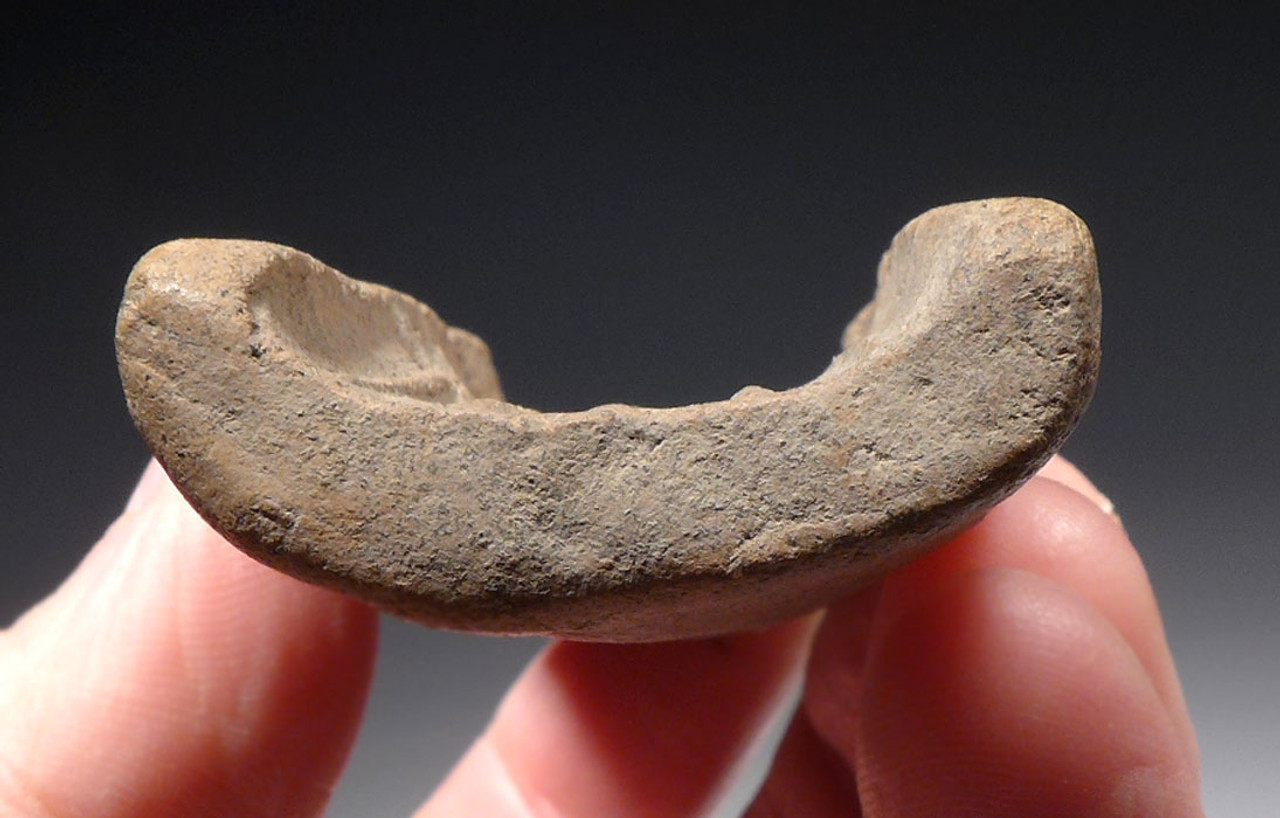Product Description
SEE MORE PRE-COLUMBIAN ARTIFACTS
Perfectly preserved and still functional for forming clay, this is a complete and unbroken ceramic mold attributed to Pre-Columbian Mezcala culture. It is rare and was used by ancient Pre-Columbian people to make terracotta figures. To highlight the rarity of such an object, think of this as the original painting and all the figures made from it being the prints and copies. The design is an abstract figure with a central head and what seems like a headdress above and below the face. It has survived complete and unbroken which is amazing considering the delicate internal detail. Traces of an old collection label can be seen on the back side. It would be fantastic to display next to a modern clay figure that could still be made from this mold!
HISTORY
The Pre-Columbian Mezcala Culture is a little understood culture that was based in present-day Guerrero, Mexico. A long, complex culture history of the Guerrero region prevents a finite understanding of who exactly made Mezcala objects. The culture is also called Balsas Culture because it is centered in the upper Balsas River drainage region. It is believed the Mezcala style emerged during the Pre-classic Period, between 700-200 B.C. and continued on into Classic Period to 650 A.D..
Objects attributed to the the Mezcala Culture include figurines, masks, small effigies of animals and objects, beads, pendants and earplug flares. They are carved from a variety of green, gray-green, gray and black color hardstones and jade. The art style is so unique that Mezcala objects are readily recognized for their abstract and minimalist anatomical features. Some Mezcala style stone objects show strong Olmec influence. Beautiful stylized masks from Guerrero exhibit Teotihuacan Classic Period influence. Mezcala style objects were excavated by the much later Aztec peoples and revered as sacred objects.
Mezcala style stone carved figurines have a basic petaloid axe form and are sometimes casually labeled "axe gods". Symmetrically arranged cuts in the stone are arranged to resemble facial and body features. Scarcer objects depict human forms in seated or crouching positions. Carved stone masks are found in more diverse forms from abstract to beautifully stylized renderings. Clay figures and pottery are also known but the culture is most famous for its unique carved stone objects.
 US DOLLAR
US DOLLAR
 EURO
EURO
 AUSTRALIAN DOLLAR
AUSTRALIAN DOLLAR
 CANADIAN DOLLAR
CANADIAN DOLLAR
 POUND STERLING
POUND STERLING












